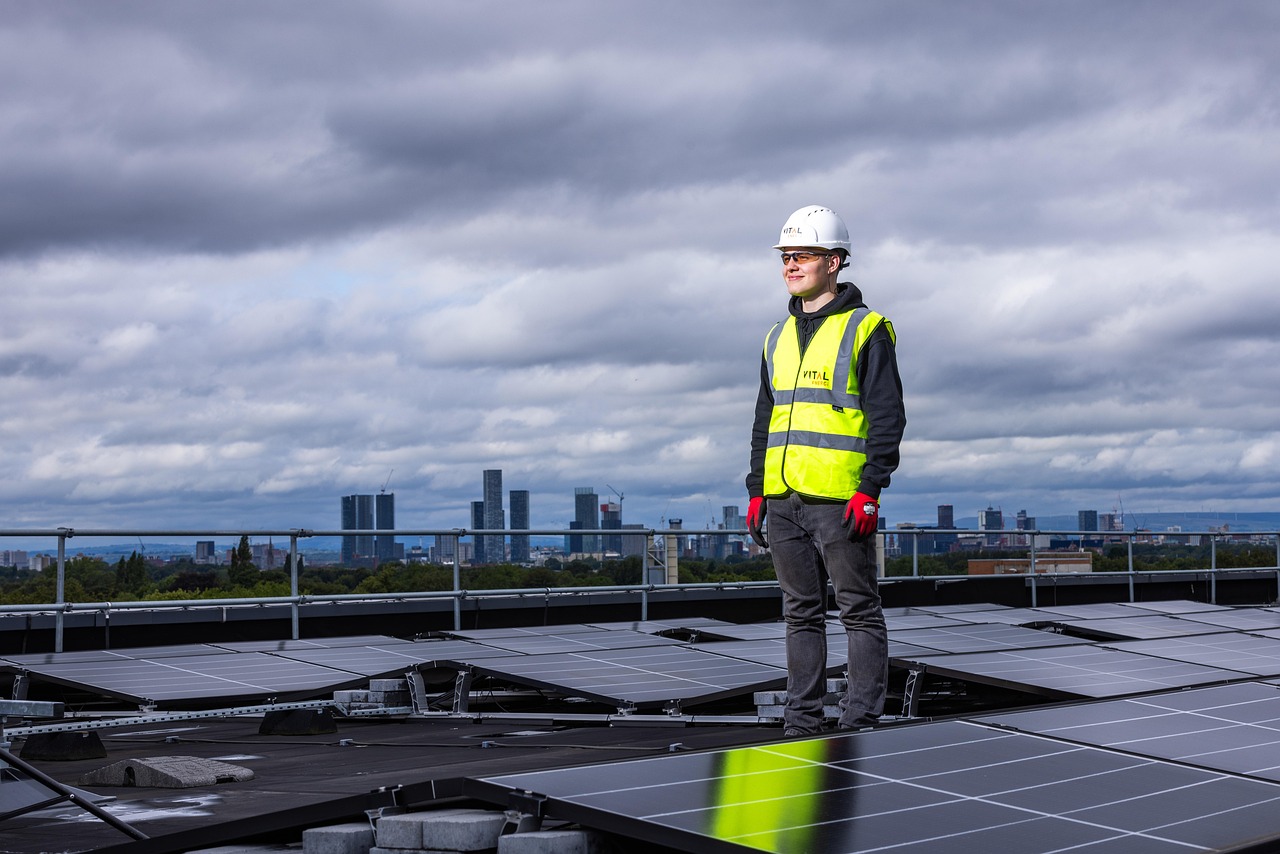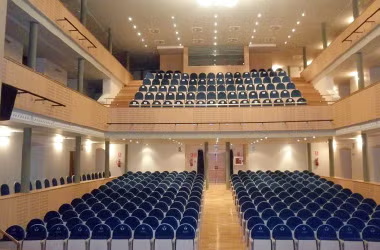Building-integrated photovoltaics (BIPV) are solar energy systems that are directly incorporated into the structure of a building, such as roofs, façades, or windows. BIPV serves a dual purpose by simultaneously acting as a functional building material and generating electricity from the sun. This integration allows buildings to harness solar power without the need for separate panels, blending energy production seamlessly with architectural design.
Unlike traditional solar panels that are added onto existing structures, BIPV replaces conventional building materials with photovoltaic elements. This approach can reduce overall costs and create more aesthetically cohesive buildings while contributing to energy efficiency and sustainability goals.
BIPV technology is evolving, with innovations including semi-transparent and bifacial modules that expand design possibilities. As solar adoption grows, BIPV offers a practical solution for incorporating renewable energy into the built environment with minimal visual disruption.
Overview of Building Integrated Photovoltaics
Building Integrated Photovoltaics (BIPV) combine solar energy generation with building materials to serve both as power sources and structural elements. This integration enhances energy efficiency while maintaining architectural integrity.
Definition and Core Principles
BIPV refers to solar photovoltaic materials incorporated directly into parts of a building, such as roofs, façades, windows, or skylights. These systems replace conventional building materials rather than being added on afterward.
The dual function of BIPV involves acting as a building envelope component and simultaneously converting solar energy into electricity. This reduces the need for separate mounting structures and supports aesthetic design goals.
Energy generation occurs on-site, lowering transmission losses and increasing energy self-sufficiency. BIPV systems often align with sustainable building standards and can contribute to reducing carbon footprints.
Types of BIPV Technologies
Common BIPV technologies include:
- Bifacial solar cells: Capture sunlight on both sides, increasing efficiency.
- Semi-transparent solar cells: Allow some light to pass, used in windows or façades.
- Solar roof tiles: Designed to resemble conventional roofing materials while generating power.
Other types involve flexible panels and customizable configurations to fit different architectural styles. The choice depends on factors like building design, location, and energy needs.
Manufacturers increasingly offer integrated products that balance power output with aesthetics and durability. Advances in materials and installation techniques improve the viability of BIPV for both residential and commercial uses.
Comparison With Traditional Solar Panels
Unlike traditional solar panels, which are mounted on frames above existing structures, BIPV are embedded into the building itself. This integration eliminates the need for additional support systems.
BIPV typically offer better aesthetic integration and can contribute to reduced construction costs by replacing some building materials. However, traditional panels often have higher efficiency and are easier to retrofit onto existing buildings.
Maintenance access can be more complex with BIPV due to their integrated nature. Energy output may vary according to the building’s design limitations and orientation compared to optimized traditional panel arrays.
Overall, BIPV add functional value by combining construction and energy generation but may involve trade-offs in efficiency and flexibility compared to traditional solar installations.
Applications and Benefits of Building Integrated Photovoltaics
Building Integrated Photovoltaics (BIPV) are designed to replace conventional building materials with solar modules, allowing buildings to generate electricity on-site. These systems enhance energy independence while blending into structures seamlessly. Their value spans across different building types, architectural aesthetics, and sustainability goals.
Residential and Commercial Integration
BIPV systems are used in both residential and commercial buildings as functional components of roofs, facades, windows, and skylights. For residences, BIPV can reduce electricity bills by supplying power directly where it is consumed, minimizing transmission losses.
In commercial buildings, BIPV offers substantial energy cost savings, especially in large-scale installations. Integration into office facades or rooftops can generate significant electricity without compromising building space. Many business owners use BIPV to meet corporate sustainability targets and reduce reliance on grid power.
BIPV installations often serve as part of a building’s original design, enabling consistent performance and ease of maintenance compared to retrofit solar panels.
Aesthetic and Architectural Advantages
A key benefit of BIPV is the seamless integration of solar technology with building design. Unlike traditional solar panels that are mounted externally, BIPV modules replace conventional building elements, preserving or enhancing the architectural style.
Options such as semi-transparent modules, colored solar glass, or custom shapes allow architects to maintain aesthetic intent while incorporating renewable energy generation. This is especially important in urban environments or historical districts where visual impact is closely regulated.
BIPV enables buildings to maintain a clean, modern appearance without visible racks or mounting hardware. This integration supports the dual role of renewable energy and architectural expression.
Energy Efficiency and Sustainability
By generating power on-site, BIPV reduces transmission losses commonly associated with centralized energy production. It can contribute significantly to a building’s net-zero energy goals. The integration into building envelopes improves thermal insulation and weatherproofing when designed correctly.
BIPV supports sustainability by replacing non-renewable materials with energy-producing components. This reduces the environmental footprint of construction and operation phases. Buildings equipped with BIPV often qualify for green certifications and incentives.
Overall, BIPV contributes to urban sustainability by decreasing reliance on fossil fuels and enhancing building energy performance.



Leave a Reply